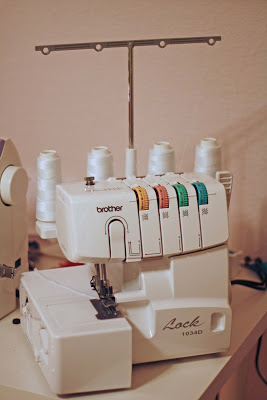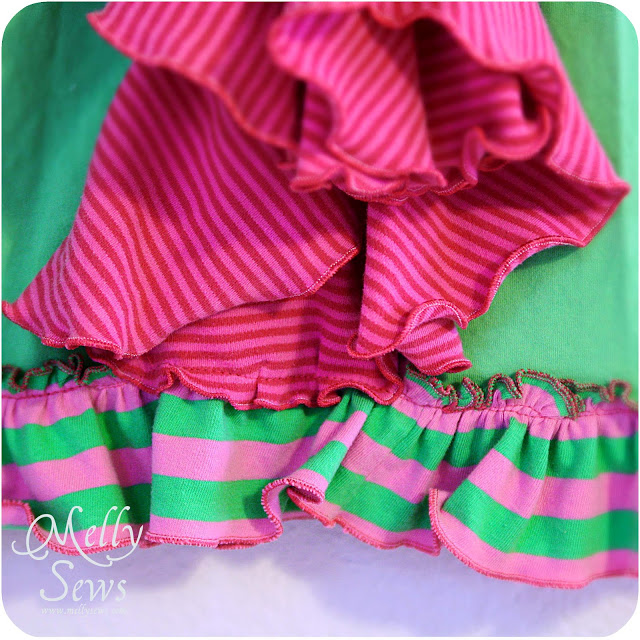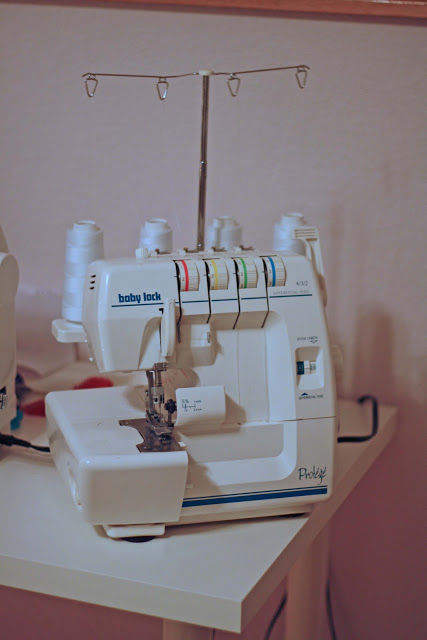After my post about sewing machines last time, I thought that this time I’d talk to you about sergers. If you’ve been sewing for a while, you might have heard that you need to get a serger.
Well, I’ll let you in on a secret – you don’t need one. I’ve only had one for about 2 years, meaning I sewed for 30 without one. My wedding dress doesn’t have a serged edge in it.
But…you might want one. And today I’ll tell you why.
First of all, what the heck is a serger, anyway? There’s a picture of my current one at the top of this post, so you can see that this looks much different from a sewing machine. And it is used differently.
A serger has loopers which do exactly what they sound like – they loop thread around the edge of the fabric (except that last picture – that’s called a flatlock stitch and we’ll talk about it in a minute).
In order to get the thread looped around the edge of the fabric perfectly, sergers also have a knife. But don’t worry – it’s not some scary razor sticking out of your machine to cut unsuspecting fingers (although my boys believe this – keeps them away from my machine!). However, it does cut your fabric, so it’s kind of a point of no return as far as sewing – you can’t just seam rip and do it over.
Which is why most beginner users (me included) seam on their sewing machine first, making sure the seam is perfect, then turn to the serger to finish. So it’s not really a timesaver then; you have to sew each seam twice.
BUT, once you get comfortable serging, and when working with a familiar pattern, the 4 thread machines (don’t even bother with a 3 thread, in my opinion) can seam and finish all at once! I use this option a lot when making t-shirts and tanks.
Sergers are also great for knits – that looping means that the seams sewn with a serger are very stretchy. However, unless you get a 5 thread machine that also converts to a coverstitcher, they don’t do the nice stretchy hems with straight topstitching that you see on store bought knits. I still use my double needle for that.
Another thing sergers can do is a rolled hem, and that is my other most often used feature. You can see the rolled edge hems on the ruffles on this skirt.
So last Christmas I got Hubby to get me the one I have now, a Brother 1034D 3/4 Lay-In Thread Serger
It’s a great machine, just keeps chugging along, and for a great price. And I have since discovered that most of the bloggers I follow who have sergers and post about their machine have the same model.
Oh, and I don’t want to forget – flatlock stitching like in the picture – I said I’d get back to that. This is a kind of decorative stitching, that I’ve used once. My son destroyed it and it quickly unraveled. So, not my favorite stitch. But possible to do with a serger.
Thanks for having me!





Leave a Reply
You must be logged in to post a comment.